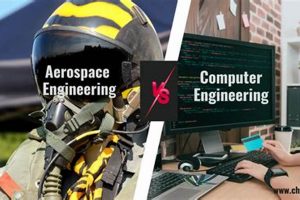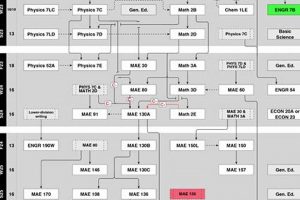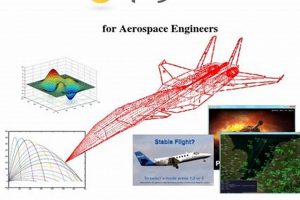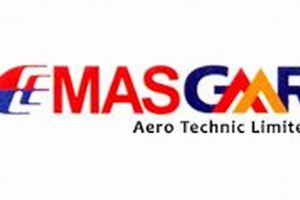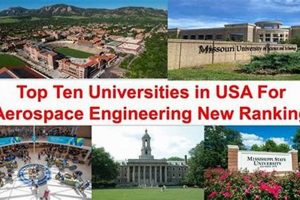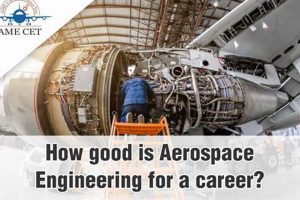The foundational requirements for professionals in the field of aerospace engineering encompass a deep understanding of mathematics, physics, and computer science. For instance, proficiency in calculus, differential equations, and linear algebra is essential for modeling complex systems and analyzing flight dynamics. A robust grasp of thermodynamics, fluid mechanics, and materials science is equally crucial for designing efficient and safe aircraft and spacecraft.
Possessing this extensive knowledge base enables aerospace engineers to design, develop, and test aircraft, spacecraft, satellites, and missiles. This expertise contributes to advancements in air travel, space exploration, and national defense. Historically, the evolution of aerospace engineering has relied on the continuous expansion of this core knowledge, driving innovation in propulsion systems, aerodynamics, and structural design. This underpins safer, faster, and more sustainable aerospace technologies.
Therefore, the subsequent sections will delve into specific areas of expertise demanded within the aerospace engineering profession. These encompass subjects such as aerodynamics, propulsion, structures and materials, control systems, and software engineering, illustrating the breadth and depth of specialized knowledge required for successful practice in this field.
Essential Knowledge for Aerospace Engineers
This section outlines critical areas of expertise that significantly contribute to success in the field of aerospace engineering. Mastery of these elements is crucial for effective design, analysis, and problem-solving.
Tip 1: Solid Foundation in Mathematics and Physics: A comprehensive understanding of calculus, differential equations, linear algebra, and advanced physics principles, including classical mechanics, electromagnetism, and thermodynamics, is paramount. These principles form the basis for modeling and simulating aerospace systems.
Tip 2: Proficiency in Aerodynamics and Fluid Mechanics: Detailed knowledge of airflow behavior, boundary layer theory, and computational fluid dynamics (CFD) is essential for designing efficient and stable aircraft and spacecraft. Understanding compressible and incompressible flow is crucial for predicting performance at various speeds.
Tip 3: Expertise in Structures and Materials: A strong grasp of structural mechanics, finite element analysis (FEA), and material properties is needed to design lightweight and robust aerospace structures. Knowledge of composite materials, alloys, and their behavior under extreme conditions is also essential.
Tip 4: Control Systems Engineering: Understanding feedback control systems, signal processing, and system dynamics is critical for designing stable and responsive flight control systems. Knowledge of sensors, actuators, and control algorithms is necessary.
Tip 5: Propulsion Systems Knowledge: A detailed understanding of various propulsion systems, including jet engines, rocket engines, and electric propulsion, is essential for designing efficient and reliable spacecraft and aircraft. This includes thermodynamics, combustion, and nozzle design principles.
Tip 6: Software Engineering and Programming Skills: Proficiency in programming languages such as Python, MATLAB, and C++ is crucial for developing simulations, analyzing data, and creating control software for aerospace systems. The ability to write efficient and reliable code is vital.
Tip 7: Systems Engineering Principles: Comprehensive knowledge of systems engineering principles, including requirements definition, system integration, and verification and validation, is essential. This ensures that complex aerospace systems are designed and developed in a structured and efficient manner.
Acquiring expertise in these areas provides a robust foundation for a successful career in aerospace engineering, enabling professionals to contribute meaningfully to advancements in aviation and space exploration.
The concluding section will provide a summary of the key insights from this discussion.
1. Aerodynamics Principles
Aerodynamics principles represent a foundational pillar within the broader scope of knowledge essential for aerospace engineers. A comprehensive understanding of these principles is not merely beneficial but critical for the design, analysis, and performance evaluation of any airborne or space-bound vehicle. The behavior of air as it interacts with a solid body dictates fundamental aspects such as lift generation, drag reduction, and overall stability. Without a strong grasp of aerodynamics, engineers cannot effectively predict or control the forces acting upon an aircraft or spacecraft, leading to potentially catastrophic consequences. For instance, the shape of an aircraft wing, meticulously crafted based on aerodynamic principles, directly influences its ability to generate sufficient lift at various speeds and altitudes. Similarly, the design of control surfaces like ailerons and rudders hinges on an intimate understanding of how airflow manipulation affects directional control.
The application of aerodynamics principles extends beyond the macroscopic design of aircraft. It also informs the microscopic analysis of airflow around individual components. Computational Fluid Dynamics (CFD) simulations, for example, allow engineers to model and analyze complex flow patterns, identifying areas of potential turbulence or drag. This information is then used to refine the design, optimizing performance and efficiency. Examples include the optimization of engine nacelle shapes to minimize drag or the design of high-lift devices like flaps and slats to improve low-speed handling characteristics. Furthermore, an understanding of compressible flow is vital for designing high-speed aircraft and spacecraft, where shockwaves and other compressibility effects become significant factors in aerodynamic performance.
In summary, a profound understanding of aerodynamics principles is an indispensable component of an aerospace engineer’s knowledge base. Its mastery directly impacts the safety, efficiency, and performance of aircraft and spacecraft. Neglecting or inadequately understanding these principles can lead to design flaws with severe consequences. Continuous research and development in aerodynamics are thus paramount for advancing the state-of-the-art in aerospace engineering and ensuring continued innovation in flight and space exploration.
2. Propulsion Systems
The design, analysis, and integration of propulsion systems represent a core competency area crucial for aerospace engineers. Mastering this domain enables the development of aircraft and spacecraft capable of achieving desired performance metrics. The scope extends from understanding fundamental thermodynamic cycles to applying advanced computational techniques.
- Thermodynamic Cycles and Engine Performance
Aerospace engineers must possess a thorough understanding of thermodynamic cycles such as the Brayton cycle (for gas turbines) and the Rankine cycle (for steam turbines), as well as rocket propulsion cycles. This knowledge is foundational for predicting engine efficiency, thrust output, and fuel consumption. For instance, modifications to the Brayton cycle, such as incorporating reheat or regeneration, can significantly improve gas turbine engine performance.
- Combustion and Fuel Chemistry
A deep understanding of combustion processes is essential, including stoichiometry, chemical kinetics, and heat transfer. The chemical properties of various fuels and their behavior during combustion directly impact engine performance and emissions. For example, the development of alternative jet fuels requires careful consideration of their combustion characteristics to ensure compatibility with existing engine designs and minimize environmental impact.
- Rocket Propulsion and Nozzle Design
Rocket propulsion principles, including solid, liquid, and hybrid rocket engines, necessitate a comprehension of propellant properties, combustion stability, and nozzle design. The de Laval nozzle, crucial for supersonic exhaust velocities, requires precise engineering to maximize thrust. Selecting appropriate propellants, whether cryogenic or storable, is integral to mission requirements and safety protocols.
- Electric Propulsion Systems
Modern aerospace applications increasingly involve electric propulsion systems, such as ion thrusters and Hall-effect thrusters. Aerospace engineers require expertise in plasma physics, electromagnetism, and ion optics to design efficient and reliable electric propulsion systems. These systems, while offering high specific impulse, often demand significant electrical power, thereby impacting overall spacecraft design.
Proficiency in these areas enables aerospace engineers to effectively address challenges related to propulsion system design, optimization, and integration. The selection of an appropriate propulsion system is fundamentally linked to mission objectives, performance requirements, and environmental considerations, illustrating the critical role of this knowledge in aerospace engineering.
3. Structural integrity
Structural integrity constitutes a cornerstone of aerospace engineering, directly influencing the safety and performance of aircraft and spacecraft. The ability of these vehicles to withstand operational loads, environmental stressors, and potential failure modes hinges on the engineer’s understanding of material properties, structural mechanics, and design principles. Therefore, a deep understanding of structural integrity is a fundamental component of the knowledge base necessary for aerospace engineers. Failure to adequately address structural concerns can result in catastrophic events, as demonstrated by historical incidents involving structural fatigue and material failure. The design of aircraft wings, for example, requires a precise balance between weight reduction and load-bearing capacity to ensure safe operation under varying flight conditions. This necessitates a comprehensive understanding of stress distribution, fatigue analysis, and the selection of appropriate materials.
Further applications include the design of spacecraft pressure vessels, which must withstand extreme pressure differentials and temperature fluctuations during launch and operation in space. The structural integrity of these vessels is paramount for maintaining a habitable environment for astronauts and protecting sensitive equipment. Finite element analysis (FEA) plays a crucial role in predicting stress concentrations and potential failure points, allowing engineers to optimize designs and select appropriate materials. Similarly, the design of landing gear systems requires careful consideration of impact loads and fatigue resistance to ensure safe landings under diverse conditions. The selection of appropriate materials, such as high-strength alloys or composite materials, is crucial for meeting performance and safety requirements. Ongoing research into advanced materials and structural designs aims to further enhance the structural integrity of aerospace vehicles while reducing weight and improving fuel efficiency.
In summary, structural integrity is not merely a design consideration but a fundamental requirement for aerospace vehicles. The knowledge and skills necessary to ensure structural integrity are essential for aerospace engineers. Challenges remain in the design of lightweight, high-strength structures capable of withstanding extreme environments, emphasizing the continuous need for research and innovation in this critical area of aerospace engineering. The broader theme of aerospace engineering emphasizes the multifaceted knowledge required to ensure safe and efficient operation in complex environments.
4. Control mechanisms
The domain of control mechanisms represents a critical area of expertise within the broader skill set requisite for aerospace engineers. These mechanisms are fundamental to ensuring the stable and predictable operation of aircraft, spacecraft, and other aerospace vehicles. The knowledge encompasses an understanding of feedback control systems, sensors, actuators, and control algorithms, all of which are essential for governing vehicle motion, orientation, and stability. Without proficiency in this area, aerospace engineers cannot effectively design or maintain systems that reliably respond to pilot inputs, environmental disturbances, or pre-programmed mission objectives. For instance, the flight control system of a commercial airliner relies heavily on sophisticated control mechanisms to maintain altitude, heading, and airspeed, even in turbulent conditions. The system uses sensors to measure these parameters, compares them to desired values, and then commands actuators to adjust control surfaces such as ailerons, elevators, and rudders.
Practical application of control mechanisms extends to a wide range of aerospace systems, including autopilot systems, satellite attitude control, and missile guidance. In autopilot systems, algorithms automate flight control tasks, relieving the pilot of manual control and improving efficiency. Satellite attitude control systems employ reaction wheels or thrusters to maintain precise orientation, enabling accurate pointing of onboard instruments for scientific observations or communication purposes. Missile guidance systems utilize advanced control algorithms to navigate towards targets, often incorporating inertial navigation systems and GPS for accurate positioning. The development of these systems necessitates a deep understanding of control theory, signal processing, and system identification. Additionally, practical considerations such as sensor noise, actuator limitations, and computational constraints must be addressed to ensure robust and reliable performance.
In summary, proficiency in control mechanisms is indispensable for aerospace engineers. The ability to design, analyze, and implement control systems directly impacts the safety, performance, and reliability of aerospace vehicles. Continued advancements in control theory, sensor technology, and computational power will further enhance the capabilities of control mechanisms, enabling more sophisticated and autonomous aerospace systems. The ongoing challenge lies in developing control systems that are robust, adaptive, and resilient to unforeseen disturbances, ensuring safe and reliable operation in increasingly complex aerospace environments.
5. Materials science
Materials science forms a critical link in the chain of knowledge essential for aerospace engineers. The performance, safety, and longevity of aircraft and spacecraft are intrinsically tied to the properties and behaviors of the materials used in their construction. Aerospace engineers require a deep understanding of materials science to select, design, and utilize materials effectively, ensuring structural integrity and optimal performance under extreme conditions. Without this knowledge, engineers risk selecting materials that are unsuitable for the intended application, leading to potential failures and compromising mission objectives. For example, the selection of aluminum alloys for aircraft fuselages is based on their high strength-to-weight ratio, corrosion resistance, and ease of manufacturing. However, engineers must also understand the limitations of these alloys, such as their susceptibility to fatigue cracking under cyclic loading, necessitating careful design and maintenance protocols.
The practical applications of materials science in aerospace engineering are extensive. They encompass the selection of high-temperature alloys for turbine blades in jet engines, the development of composite materials for lightweight and strong aircraft structures, and the design of thermal protection systems for spacecraft re-entering the Earth’s atmosphere. Each application demands a thorough understanding of material properties, such as tensile strength, yield strength, creep resistance, fatigue resistance, and thermal conductivity. Moreover, engineers must consider environmental factors, such as temperature, pressure, radiation, and corrosive agents, which can significantly affect material performance. Recent advancements in materials science, such as the development of carbon fiber reinforced polymers and functionally graded materials, offer new opportunities for improving the performance and efficiency of aerospace vehicles. However, these advancements also present new challenges, such as ensuring the long-term durability and reliability of these materials under extreme conditions.
In summary, materials science is not merely an ancillary subject but a fundamental discipline for aerospace engineers. The ability to select, design, and utilize materials effectively is crucial for ensuring the safety, performance, and longevity of aircraft and spacecraft. Continued research and development in materials science are essential for advancing the state-of-the-art in aerospace engineering and enabling future innovations in flight and space exploration. The integration of advanced materials into aerospace designs presents ongoing challenges related to manufacturing, testing, and certification, underscoring the need for interdisciplinary collaboration between materials scientists, engineers, and regulatory agencies.
Frequently Asked Questions
The following addresses common inquiries regarding the essential knowledge base required for a successful career in aerospace engineering. The responses aim to provide clear and concise information based on established industry practices and academic rigor.
Question 1: What mathematical disciplines are most critical for aerospace engineering practice?
A strong foundation in calculus, differential equations, linear algebra, and numerical methods is essential. These mathematical tools are fundamental for modeling complex systems, analyzing flight dynamics, and solving engineering problems related to structural analysis and fluid mechanics.
Question 2: How important is computer programming for aerospace engineers?
Proficiency in computer programming is increasingly vital. Languages such as Python, MATLAB, and C++ are used for simulations, data analysis, control system development, and automating engineering tasks. The ability to write efficient and reliable code is a valuable asset.
Question 3: What role does materials science play in aerospace engineering?
Materials science is fundamental for selecting appropriate materials for aircraft and spacecraft structures. Knowledge of material properties, such as strength, stiffness, fatigue resistance, and corrosion resistance, is crucial for ensuring structural integrity and safety under extreme conditions.
Question 4: How does an understanding of fluid mechanics impact aerospace design?
A deep understanding of fluid mechanics is essential for designing aerodynamic surfaces, analyzing airflow behavior, and optimizing propulsion systems. Knowledge of compressible and incompressible flow, boundary layer theory, and computational fluid dynamics (CFD) is critical for predicting aircraft and spacecraft performance.
Question 5: What knowledge is required for control systems design in aerospace applications?
Expertise in control systems engineering is vital for designing stable and responsive flight control systems. Knowledge of feedback control systems, signal processing, system dynamics, and control algorithms is necessary for ensuring safe and reliable operation of aircraft and spacecraft.
Question 6: Why is knowledge of systems engineering important for aerospace engineers?
Comprehensive knowledge of systems engineering principles is essential for managing the complexity of aerospace projects. This includes requirements definition, system integration, verification, and validation, ensuring that all components work together seamlessly to meet mission objectives.
The information presented above offers insights into the multifaceted expertise necessary for navigating the challenges and opportunities within aerospace engineering. Continued learning and professional development remain crucial for staying abreast of technological advancements and industry best practices.
The next segment will provide a conclusive summary consolidating the essential knowledge components discussed throughout the article.
Conclusion
This discussion has articulated the breadth of expertise demanded of aerospace engineers. A robust foundation in mathematics, physics, and computer science underpins specialized knowledge in aerodynamics, propulsion, structural integrity, control mechanisms, and materials science. Proficiency across these domains is not merely advantageous but essential for the design, development, and maintenance of safe and efficient aerospace vehicles.
The future of aerospace engineering relies on continuous expansion of this knowledge base. Professionals must commit to lifelong learning and adaptation to emerging technologies. The safety, performance, and sustainability of future aerospace endeavors depend upon a rigorous understanding and application of these essential principles. Consequently, a dedicated pursuit of comprehensive expertise remains paramount for those seeking to contribute meaningfully to this critical field.


